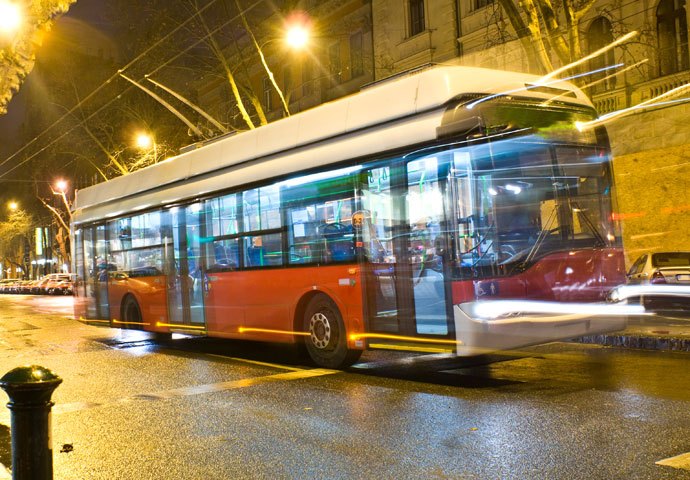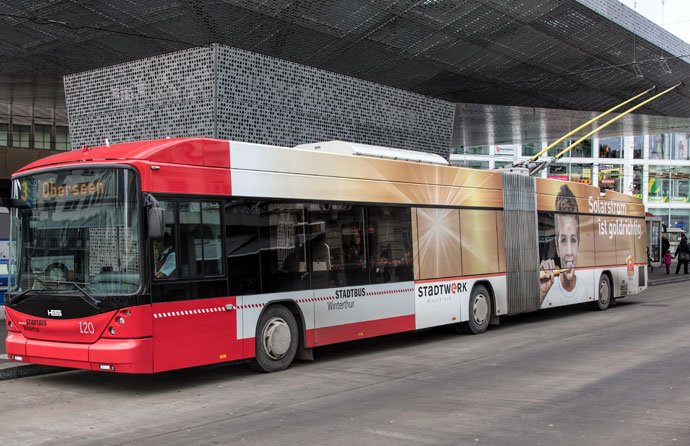
There was a time when many British towns and cities hummed with the sound of the trolleybus.
Bridging the gap between trams and diesel buses, the benefits of the electric trolleybus include zero emissions on the street, very little noise, and powerful, smooth acceleration. And from the perspective of the operator, trolleybuses offer lower maintenance costs. Given their strengths, it’s a wonder we gave them up in favour of diesel-powered buses. Especially when you consider the damage caused to the environment and our health by diesel emissions.
Electric trolleybus
Different from an electric or hybrid bus that carries its own source of power, a trolleybus draws electricity from two overhead wires using spring-loaded trolley poles (trams require only one wire and pole)
The pollution caused by diesel buses is compounded because the operators are dragging their heels when it comes to buying cleaner vehicles. A quirk of vehicle registration intended to allow one-off vehicles such kit cars to bypass certain regulations has been exploited in order to save money. Using Individual Vehicle Approval (IVA) to register a bus has proved a popular way of bypassing the latest emissions standards.

According to the Society of Motor Manufacturers and Traders, which monitors registrations data, as little as three years ago, more than 80 per cent of buses and coaches bought in Britain failed to meet Euro 6 emissions standards. Euro 6 buses and coaches emit half as much NO2, the harmful gas linked to heart attacks, cancer and asthma.
The centralised power stations used by electric trolleybuses on the other hand, have the potential to be far more environmentally friendly. Electricity derived from renewable sources, considerably adds to the advantages.
Infrastructure costs for electric trolley vehicles equate to 10 per cent of light rail systems and only 20 per cent greater than diesel buses. If one takes into account the ‘environmental advantages, trolleybuses are the cheapest option.
The trolleybus dates back to 1882, and an experimental demonstration in Berlin. It was 1911 before the first trolleybuses arrived in Britain. For much of its existence, the London system was the largest in the world. It had 68 routes, and a fleet of over 1800 trolleybuses. These were eventually all replaced with diesel vehicles. Currently, around 300 trolleybus systems continue to operate in countries around the world.
According to trolleybus.org: “Considerable advances in trolleybus technology, such as much less obtrusive overhead AC traction equipment and solid state sub-stations further enhance an already reliable system. Where tested (Vancouver), passengers prefer to ride on trolleybuses and there is evidence (San Francisco, Seattle) of 10-15% increases in usage where trolleybuses have been installed. When the decision makers understand how enticing and cost-effective state-of-the-art electric trolleybuses can be and how to best implement them, they will be more inclined to push forward with road priority and traffic reduction schemes with these new forms of non-polluting urban transport. We are generating a vision for the planners and politicians to move towards.”
ETA cycle insurance
ETA cycle insurance offers a sympathetic policy on the storage of bicycles. For example, as long as a shed door is locked, the bicycles stored within do not require any further security. In addition, the policy covers stolen quick-release components and for added peace of mind, claims are handled in-house. Furthermore, bikes are never devalued, no matter their age. Hardly surprising that The Good Shopping Guide voted us to provide the most ethical insurance in Britain.
Michael
TROLLEY BUSES,,,,, and the FAILING CONFIDENCE TRICK CALLED THE NHS ,,,
Of course, why did nobody think of this before ? Trolley buses, by their guaranteed simple system
of propulsion lacking all emissions will in the short and long term lead to saving lives and protecting health !! Wow, that is a scary prospect for government pen pushing bogey men who for as long as they resist the trolley, can be heartbroken at how many voters will have a plethora of various breathing problems, leading to the non stop useful device of legally killing off loads of their voters, as well as non voters or abstaining types. Great solution to justify closing down as many hospitals as possible, obviously due to an overcrowded health service ! Have I overstepped the mark on this, or could there be a modicum of unconscious non intended truth to this negative fantasy of the future ?
edmund white
I remember riding on them in Bournemouth in the 50s/60s they were very good then, and would be even better now, all round cleaner way to travel.
Mark Cleave
(1) “Electric Trolleybuses” What other types are there? (2) “many British towns and cities” How many? Can’t think of more that 10 at most. Stand to be corrected. (3) “more than 80% … FAILED to meet Euro 6…” Yes but it was only just coming in at that stage. I would guess 100% currently fail Euro 10 if we are still in Europe when it comes in!!!
Tony Williams
I wish eta would maintain a relationship with reality and history, and not adopt this tone of “how could they have been so short-sighted/foolish, unaware of what things would be like 60 years later?”
Many of the trolleybus systems in Britain used the stanchions (metal poles like tall streetlights) to hold up the overhead wires that had previously been used to support the overhead for the tram systems that the trolleybuses replaced. By the late 1950s and early 1960s many of these were in need of replacement. So were the trolleybuses. So major expenditure would be needed to keep the trolleybus system running. It was much simpler and cheaper to replace them with motor buses. It is also much easier to extend or divert a motor bus route than a trolleybus route. In the 1960s no-one was aware of the problem of diesel emissions that the much larger number of diesel vehicles on the roads produce today – fifty years later – , so it ‘s not surprising at all that decisions were made to abandon trolleybuses.
Mark: there were over 40 trolleybus systems in Britain. Thanks for pointing out some of the inaccuracies in the article.
Michael: I feel sorry for you, if that’s the world of fantasy you live in.